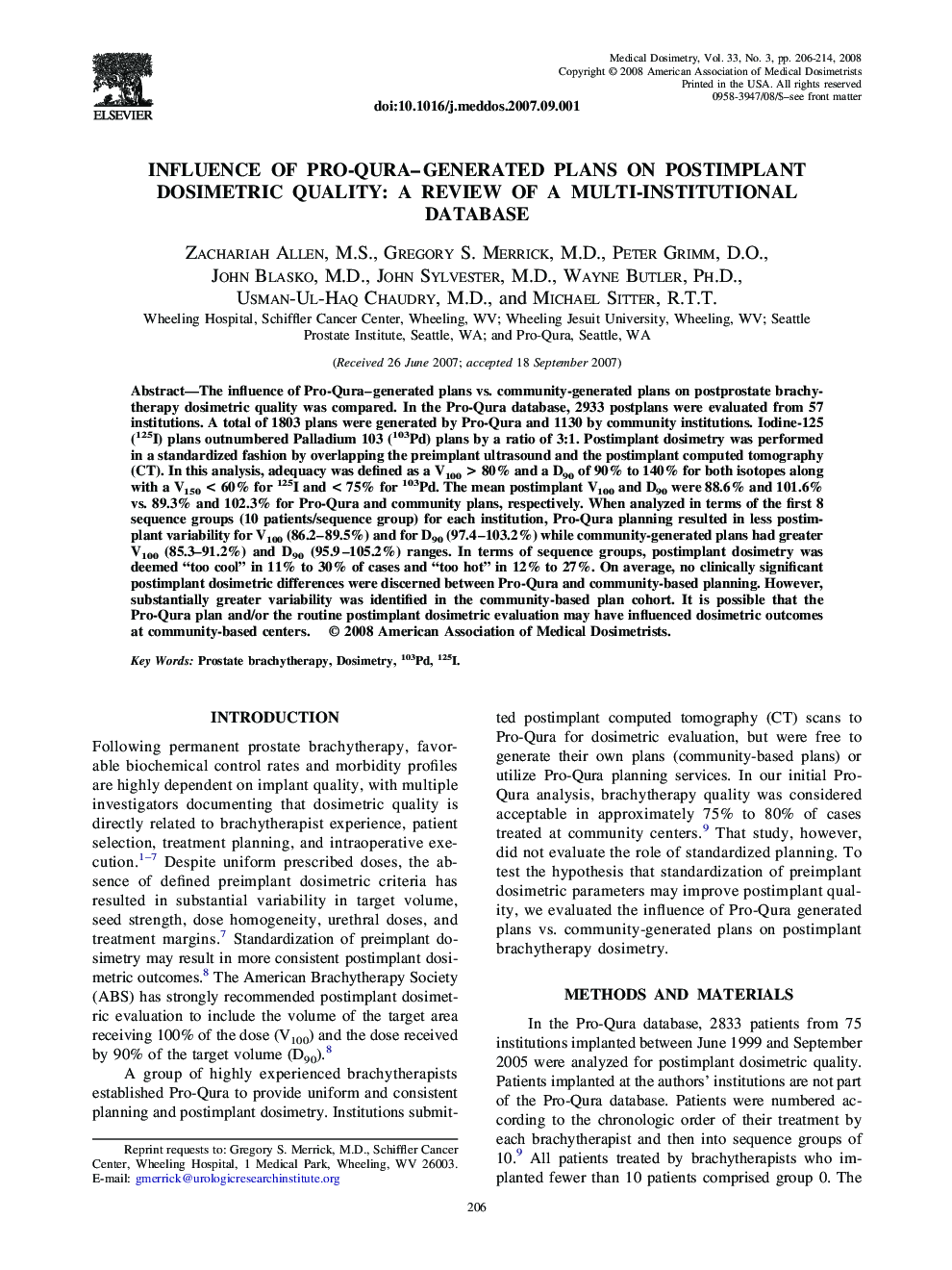| Article ID | Journal | Published Year | Pages | File Type |
|---|---|---|---|---|
| 1885607 | Medical Dosimetry | 2008 | 9 Pages |
Abstract
The influence of Pro-Qura-generated plans vs. community-generated plans on postprostate brachytherapy dosimetric quality was compared. In the Pro-Qura database, 2933 postplans were evaluated from 57 institutions. A total of 1803 plans were generated by Pro-Qura and 1130 by community institutions. Iodine-125 (125I) plans outnumbered Palladium 103 (103Pd) plans by a ratio of 3:1. Postimplant dosimetry was performed in a standardized fashion by overlapping the preimplant ultrasound and the postimplant computed tomography (CT). In this analysis, adequacy was defined as a V100 > 80% and a D90 of 90% to 140% for both isotopes along with a V150 < 60% for 125I and < 75% for 103Pd. The mean postimplant V100 and D90 were 88.6% and 101.6% vs. 89.3% and 102.3% for Pro-Qura and community plans, respectively. When analyzed in terms of the first 8 sequence groups (10 patients/sequence group) for each institution, Pro-Qura planning resulted in less postimplant variability for V100 (86.2-89.5%) and for D90 (97.4-103.2%) while community-generated plans had greater V100 (85.3-91.2%) and D90 (95.9-105.2%) ranges. In terms of sequence groups, postimplant dosimetry was deemed “too cool” in 11% to 30% of cases and “too hot” in 12% to 27%. On average, no clinically significant postimplant dosimetric differences were discerned between Pro-Qura and community-based planning. However, substantially greater variability was identified in the community-based plan cohort. It is possible that the Pro-Qura plan and/or the routine postimplant dosimetric evaluation may have influenced dosimetric outcomes at community-based centers.
Related Topics
Physical Sciences and Engineering
Physics and Astronomy
Radiation
Authors
Zachariah M.S., Gregory S. M.D., Peter D.O., John M.D., John M.D., Wayne Ph.D., Usman-Ul-Haq M.D., Michael R.T.T.,
